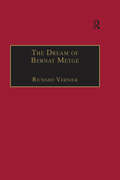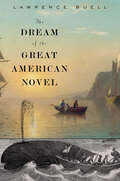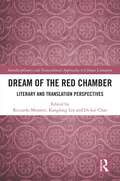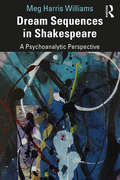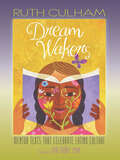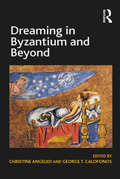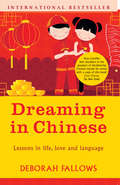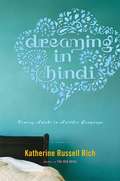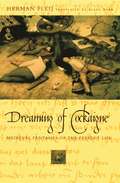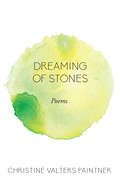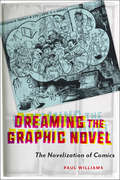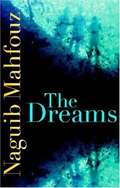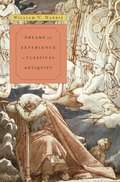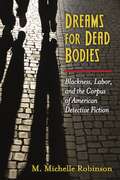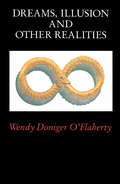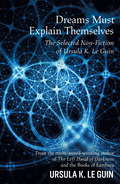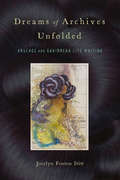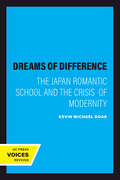- Table View
- List View
The Dream of Bernat Metge
by Richard VernierThe Dream of Bernat Metge is the first English translation of Lo Somni, a prose dialogue written around 1397 by the Catalan humanist Bernat Metge (?1340-1413). It stands as a noteworthy example of nascent humanism and a vivid document of contemporary customs in the Crown of Aragon. As a document touching on eschatology, faith and scepticism, politics, classical mythology, traditional mysogyny and current fashions, it holds appeal for scholars in many fields. This is one of the few modern editions of the text available, and the only one presented in English. Richard Vernier provides an extensive original introduction, as well as an annotated translation of the text. In the introduction, Vernier places the text in its historical and cultural background, and supplies a brief biography of the author. He discusses literary antecedents of Lo Somni, poised as it is between medieval allegory and humanistic discourse, and its value in the development of Catalan prose. He also traces the history of the text from the time it was written through its descent into oblivion, to its rediscovery in the nineteenth century. This first English-language edition of Lo Somni will interest historians and scholars of literature, philosophy and Romance languages. This translation provides a unique opportunity for comparative studies with other Western European medieval texts and authors.
Dream of the Dead
by Marie SethJenny and her father go to remote Scotland for the summer. Jenny's friend Diana comes for a visit. But it seems the house is haunted and Diana is drawn into the past.
The Dream of the Great American Novel
by Lawrence Buell“Magisterial . . . make[s] you suddenly see new things in familiar books . . . brilliant analyses of a dozen or so front-runners in the Great American Novel sweepstakes.” —Michael Dirda, Virginia Quarterly ReviewThe idea of “the great American novel” continues to thrive almost as vigorously as in its nineteenth-century heyday, defying more than 150 years of attempts to dismiss it as amateurish or obsolete. In this landmark book, the first in many years to take in the whole sweep of national fiction, Lawrence Buell reanimates this supposedly antiquated idea, demonstrating that its history is a key to the dynamics of national literature and national identity itself.The dream of the G.A.N., as Henry James nicknamed it, crystallized soon after the Civil War. In fresh, in-depth readings of selected contenders from the 1850s onward in conversation with hundreds of other novels, Buell delineates four “scripts” for G.A.N. candidates and their themes, illustrated by such titles as The Scarlet Letter, The Great Gatsby, Invisible Man, Uncle Tom’s Cabin, Beloved, Moby-Dick, and Gravity’s Rainbow—works dwelling on topics from self-invention to the promise and pitfalls of democracy.The canvas of the great American novel is in constant motion, reflecting revolutions in fictional fashion, the changing face of authorship, and the inseparability of high culture from popular. As Buell reveals, the elusive G.A.N. showcases the myth of the United States as a nation perpetually under construction.“Engaging and provocative . . . ultimately affirms the importance of literature to a nation’s sense of itself.” —Sarah Graham, Times Literary Supplement“Rich in critical insight . . . Buell wonders if the GAN isn’t stirring again in surprising new developments in science fiction. An impressively ambitious literary survey.” —Booklist (starred review)
Dream of the Red Chamber: Literary and Translation Perspectives (Interdisciplinary and Transcultural Approaches to Chinese Literature)
by Riccardo Moratto Kanglong Liu Di-Kai ChaoThis edited volume contains an excellent collection of contributions and presents various informative topics under the central theme: literary and translation approaches to China’s greatest classical novel Hongloumeng. Acclaimed as one of the Four Great Classical Novels of Chinese literature, Hongloumeng (known in English as The Dream of the Red Chamber or The Story of the Stone) epitomizes 18th century Chinese social and cultural life. Owing to its kaleidoscopic description of Chinese life and culture, the novel has also exerted a significant impact on world literature. Its various translations, either full-length or abridged, have been widely read by an international audience. The contributors to this volume provide a renewed perspective into Hongloumeng studies by bringing together scholarship in the fields of literary and translation studies. Specifically, the use of corpora in the framework of digital humanities in a number of chapters helps re-address many issues of the novel and its translations, from an innovative angle. The book is an insightful resource for both scholars of Chinese literature and for linguists with a focus on translation studies.
Dream Sequences in Shakespeare: A Psychoanalytic Perspective
by Meg Harris WilliamsThis book takes a new approach to Shakespeare’s plays, exploring them as dream-thought in the modern psychoanalytic sense of unconscious thinking. Through his commitment to poetic language, Shakespeare offers images and dramatic sequences that illustrate fundamental developmental conflicts, the solutions for which are not preconceived but evolve through the process of dramatisation. In this volume, Meg Harris Williams explores the fundamental distinction between the surface meanings of plot or argument and the deep grammar of dreamlife, applied not only to those plays known as ‘dream-plays’ but also to critical sequences throughout Shakespeare’s oeuvre. Through a post-Kleinian model based on the thinking of Bion, Meltzer, and Money-Kyrle, this book sheds new light on both Shakespeare’s own relation to the play and on the identificatory processes of the playwright, reader, or audience. Dream Sequences in Shakespeare is important reading for psychoanalysts, playwrights, and students.
Dream Wakers: Mentor Texts That Celebrate Latino Culture
by Ruth CulhamThere is power that resides in outstanding culturally diverse literature'sa power that has the potential to engage students in reading and teach them about the art and craft of writing. 'sRuth Culham We dream of a time when all students will be confident, capable readers and writers. When we teach students to read as writers using mentor texts, we awaken that dream and make it real. Imagine the power of providing students with books that show them their faces, their culture, their lives on every page. And imagine how every classroom's collection of mentor texts can grow by adding books that celebrate diversity. In Dream Wakers: Mentor Texts That Celebrate Latino Culture, Ruth Culham focuses her love of children's literature'sand her decades of work developing the traits of writing'son books that celebrate Latino life and culture. She provides a wide variety of ideas to teach writing using some of the richest and most beautiful children's books available. Dream Wakers gives you: • An annotated list of more than 120 books with do-it-today lesson ideas for teaching the traits of writing'sIdeas, Organization, Voice, Word Choice, Sentence Fluency, and Conventions. More than half of the books listed are bilingual or offer English and/or Spanish editions. • Eleven original, insightful essays by renowned children's authors of some of the featured books • A handy reference chart that helps teachers locate books quickly by trait, genre, language, and author/publisher information. Ruth encourages all of us to make sure students of all backgrounds have access to high-quality, culturally diverse texts and recognize the difference those texts will make in their reading lives, as well as in their perception of themselves as a thinkers, learners, and citizens.
Dreamer of Dune: The Biography of Frank Herbert
by Brian HerbertA biography of Frank Herbert, author of 'Dune', by his son.
Dreaming by the Book
by Elaine ScarryA pathbreaking work about the way literature teaches us to use our imagination.We often attribute to our imaginative life powers that go beyond ordinary perception or sensation. In Dreaming by the Book, the noted scholar Elaine Scarry explores the apparently miraculous but in fact understandable processes by which poets and writers confer those powers on us: how they teach us the work of imaginative creation.Writers from Homer to Heaney, Scarry argues, instruct us in the art of mental composition even as their poems progress: just as painters understand paint, composers musical sounds, and sculptors stone or metal, verbal artists understand and deploy the only material in which their creations will get made - the backlit tissue of the human imagination. In her brilliant synthesis of cognitive psychology, literary criticism, and philosophy, she explores the five principal formal practices by which writers bring things to life for their readers; she calls them radiant ignition, rarity, dyadic addition and subtraction, stretching, and floral supposition. The transforming power of these mental practices can be seen in their appearance in great literature, of course, but also in applying them to - and watching how they revise - our own daydreams.Dreaming by the Book is not only an utterly original work of literary analysis but a sequence of on-the-spot mental experiments.
Dreaming in Byzantium and Beyond
by George T. CalofonosAlthough the actual dreaming experience of the Byzantines lies beyond our reach, the remarkable number of dream narratives in the surviving sources of the period attests to the cardinal function of dreams as vehicles of meaning, and thus affords modern scholars access to the wider cultural fabric of symbolic representations of the Byzantine world. Whether recounting real or invented dreams, the narratives serve various purposes, such as political and religious agendas, personal aspirations or simply an author’s display of literary skill. It is only in recent years that Byzantine dreaming has attracted scholarly attention, and important publications have suggested the way in which Byzantines reshaped ancient interpretative models and applied new perceptions to the functions of dreams. This book - the first collection of studies on Byzantine dreams to be published - aims to demonstrate further the importance of closely examining dreams in Byzantium in their wider historical and cultural, as well as narrative, context. Linked by this common thread, the essays offer insights into the function of dreams in hagiography, historiography, rhetoric, epistolography, and romance. They explore gender and erotic aspects of dreams; they examine cross-cultural facets of dreaming, provide new readings, and contextualize specific cases; they also look at the Greco-Roman background and Islamic influences of Byzantine dreams and their Christianization. The volume provides a broad variety of perspectives, including those of psychoanalysis and anthropology.
Dreaming in Chinese: ... and Discovering What Makes a Billion People Tick
by Deborah FallowsThis is a book to appeal to anyone with an interest in China, be they first time tourists, seasoned business people, or even the idly curious. Accessible, revelatory and entertaining, it will help you discover this extraordinary nation for yourself.
Dreaming in Hindi: Coming Awake in Another Language
by Katherine Russell RichAn eye-opening and courageous memoir that explores what learning a new language can teach us about distant worlds and, ultimately, ourselves. After miraculously surviving a serious illness, Katherine Rich found herself at an impasse in her career as a magazine editor. She spontaneously accepted a freelance writing assignment to go to India, where she found herself thunderstruck by the place and the language, and before she knew it she was on her way to Udaipur, a city in the northwestern state of Rajasthan, in order to learn Hindi. Rich documents her experiences--ranging from the bizarre to the frightening to the unexpectedly exhilarating--using Hindi as the lens through which she is given a new perspective not only on India, but on the radical way the country and the language itself were changing her. Fascinated by the process, she went on to interview linguistics experts around the world, reporting back from the frontlines of the science wars on what happens in the brain when we learn a new language. She brings both of these experiences together seamlessly in Dreaming in Hindi, a remarkably unique and thoughtful account of self-discovery.
Dreaming in Hindi: Coming Awake in Another Language
by Katherine Russell RichAn eye-opening and courageous memoir that explores what learning a new language can teach us about distant worlds and, ultimately, ourselves. After miraculously surviving a serious illness, Katherine Rich found herself at an impasse in her career as a magazine editor. She spontaneously accepted a freelance writing assignment to go to India, where she found herself thunderstruck by the place and the language, and before she knew it she was on her way to Udaipur, a city in the northwestern state of Rajasthan, in order to learn Hindi. Rich documents her experiences--ranging from the bizarre to the frightening to the unexpectedly exhilarating--using Hindi as the lens through which she is given a new perspective not only on India, but on the radical way the country and the language itself were changing her. Fascinated by the process, she went on to interview linguistics experts around the world, reporting back from the frontlines of the science wars on what happens in the brain when we learn a new language. She brings both of these experiences together seamlessly in Dreaming in Hindi, a remarkably unique and thoughtful account of self-discovery.
Dreaming of Cockaigne: Medieval Fantasies of the Perfect Life
by Herman PleijImagine a dreamland where roasted pigs wander about with knives in their backs to make carving easy, where grilled geese fly directly into one's mouth, where cooked fish jump out of the water and land at one's feet. The weather is always mild, the wine flows freely, sex is readily available, and all people enjoy eternal youth.Such is Cockaigne. Portrayed in legend, oral history, and art, this imaginary land became the most pervasive collective dream of medieval times-an earthly paradise that served to counter the suffering and frustration of daily existence and to allay anxieties about an increasingly elusive heavenly paradise.Illustrated with extraordinary artwork from the Middle Ages, Herman Pleij's Dreaming of Cockaigne is a spirited account of this lost paradise and the world that brought it to life. Pleij takes three important texts as his starting points for an inspired of the panorama of ideas, dreams, popular religion, and literary and artistic creation present in the late Middle Ages. What emerges is a well-defined picture of the era, furnished with a wealth of detail from all of Europe, as well as Asia and America.Pleij draws upon his thorough knowledge of medieval European literature, art, history, and folklore to describe the fantasies that fed the tales of Cockaigne and their connections to the central obsessions of medieval life.
Dreaming of Cockaigne: Medieval Fantasies of the Perfect Life
by Diane Webb Herman PleijImagine a dreamland where roasted pigs wander about with knives in their backs to make carving easy, where grilled geese fly directly into one's mouth, where cooked fish jump out of the water and land at one's feet. The weather is always mild, the wine flows freely, sex is readily available, and all people enjoy eternal youth. Such is Cockaigne. Portrayed in legend, oral history, and art, this imaginary land became the most pervasive collective dream of medieval times-an earthly paradise that served to counter the suffering and frustration of daily existence and to allay anxieties about an increasingly elusive heavenly paradise. Illustrated with extraordinary artwork from the Middle Ages, Herman Pleij's Dreaming of Cockaigne is a spirited account of a lost paradise and the world that brought it to life. Pleij takes three important texts as his starting points for an inspired of the panorama of ideas, dreams, popular religion, and literary and artistic creation present in the late Middle Ages. What emerges is a well-defined picture of the era, furnished with a wealth of detail from all of Europe, as well as Asia and America. Pleij draws upon his thorough knowledge of medieval European literature, art, history, and folklore to describe the fantasies that fed the tales of Cockaigne and their connections to the central obsessions of medieval life.
Dreaming of Stones: Poems (Paraclete Poetry)
by Christine Valters PaintnerThe poems in Dreaming of Stones are about what endures: hope and desire, changing seasons, wild places, love, and the wisdom of mystics. Inspired by the poet's time living in Ireland these readings invite you into deeper ways of seeing the world. They have an incantational quality. Drawing on her commitment as a Benedictine oblate, the poems arise out of a practice of sitting in silence and lectio divina, in which life becomes the holy text. No stranger to poetry, Paintner's bestselling spirituality titles have often included poems. In this first exclusively poetic collection, she writes with a contemplative heart about kinship with nature, ancestral connections, intimacy, the landscape, the unfolding nature of time, and Christian mystics. It can be read for reflection to spark the heart and to offer solace and inspiration in difficult times. Breath This breathing in is a miracle, this breathing out, release, this breathing in a welcome to the unseen gifts which sustain me each moment, this breathing out a sweet sigh, a bow to my mortality, this breathing in a holy yes to life, this breathing out a sacred no to all that causes me to clench and grasp, this breathing in is a revelation, this breathing out, freedom.
Dreaming the Graphic Novel: The Novelization of Comics
by Paul WilliamsThe term “graphic novel” was first coined in 1964, but it wouldn’t be broadly used until the 1980s, when graphic novels such as Watchmen and Maus achieved commercial success and critical acclaim. What happened in the intervening years, after the graphic novel was conceptualized yet before it was widely recognized? Dreaming the Graphic Novel examines how notions of the graphic novel began to coalesce in the 1970s, a time of great change for American comics, with declining sales of mainstream periodicals, the arrival of specialty comics stores, and (at least initially) a thriving underground comix scene. Surveying the eclectic array of long comics narratives that emerged from this fertile period, Paul Williams investigates many texts that have fallen out of graphic novel history. As he demonstrates, the question of what makes a text a ‘graphic novel’ was the subject of fierce debate among fans, creators, and publishers, inspiring arguments about the literariness of comics that are still taking place among scholars today. Unearthing a treasure trove of fanzines, adverts, and unpublished letters, Dreaming the Graphic Novel gives readers an exciting inside look at a pivotal moment in the art form’s development.
The Dreams
by Raymond Stock Naguib MahfouzA man finds his neighborhood turned into a circus, but his joy turns to anger when he cannot escape it. A group of joke-telling friends provoke the murderous revenge of an ancient Egyptian queen.
Dreams and Experience in Classical Antiquity
by William V. HarrisFrom the Iliad to Aristophanes, from the gospel of Matthew to Augustine, Greek and Latin texts are constellated with descriptive images of dreams. Some are formulaic, others intensely vivid. The best ancient minds—Plato, Aristotle, the physician Galen, and others—struggled to understand the meaning of dreams. With Dreams and Experience in Classical Antiquity the renowned ancient historian William Harris turns his attention to oneiric matters. This cultural history of dreams in antiquity draws on both contemporary post-Freudian science and careful critiques of the ancient texts. Harris traces the history of characteristic forms of dream-description and relates them both to the ancient experience of dreaming and to literary and religious imperatives. He analyzes the nuances of Greek and Roman belief in the truth-telling potential of dreams, and in a final chapter offers an assessment of ancient attempts to understand dreams naturalistically. How did dreaming culture evolve from Homer’s time to late antiquity? What did these dreams signify? And how do we read and understand ancient dreams through modern eyes? Harris takes an elusive subject and writes about it with rigor and precision, reminding us of specificities, contexts, and changing attitudes through history.
Dreams and Stones
by Bill Johnston Magdalena TulliDreams and Stones is a small masterpiece, one of the most extraordinary works of literature to come out of Central and Eastern Europe since the fall of communism. In sculpted, poetic prose reminiscent of Bruno Schulz, it tells the story of the emergence of a great city. In Tulli's hands myth, metaphor, history, and narrative are combined to magical effect. Dreams and Stones is about the growth of a city, and also about all cities; at the same time it is not about cities at all, but about how worlds are created, trans- formed, and lost through words alone. A stunning debut by one of Europe's finest new writers.
Dreams for Dead Bodies
by Miriam Michelle RobinsonDreams for Dead Bodies: Blackness, Labor, and the Corpus of American Detective Fiction offers new arguments about the origins of detective fiction in the United States, tracing the lineage of the genre back to unexpected texts and uncovering how authors such as Edgar Allan Poe, Mark Twain, Pauline Hopkins, and Rudolph Fisher made use of the genre's puzzle-elements to explore the shifting dynamics of race and labor in America. The author constructs an interracial genealogy of detective fiction to create a nuanced picture of the ways that black and white authors appropriated and cultivated literary conventions that coalesced in a recognizable genre at the turn of the twentieth century. These authors tinkered with detective fiction's puzzle-elements to address a variety of historical contexts, including the exigencies of chattel slavery, the erosion of working-class solidarities by racial and ethnic competition, and accelerated mass production.Dreams for Dead Bodies demonstrates that nineteenth- and early twentieth-century American literature was broadly engaged with detective fiction, and that authors rehearsed and refined its formal elements in literary works typically relegated to the margins of the genre. By looking at these margins, the book argues, we can better understand the origins and cultural functions of American detective fiction.
Dreams, Illusion, and Other Realities
by Wendy Doniger O'Flaherty"Wendy Doniger O'Flaherty . . . weaves a brilliant analysis of the complex role of dreams and dreaming in Indian religion, philosophy, literature, and art. . . . In her creative hands, enchanting Indian myths and stories illuminate and are illuminated by authors as different as Aeschylus, Plato, Freud, Jung, Kurl Gödel, Thomas Kuhn, Borges, Picasso, Sir Ernst Gombrich, and many others. This richly suggestive book challenges many of our fundamental assumptions about ourselves and our world."—Mark C. Taylor, New York Times Book Review "Dazzling analysis. . . . The book is firm and convincing once you appreciate its central point, which is that in traditional Hindu thought the dream isn't an accident or byway of experience, but rather the locus of epistemology. In its willful confusion of categories, its teasing readiness to blur the line between the imagined and the real, the dream actually embodies the whole problem of knowledge. . . . [O'Flaherty] wants to make your mental flesh creep, and she succeeds."—Mark Caldwell, Village Voice
Dreams in Chinese Fiction: Spiritism, Aestheticism, and Nationalism (Routledge Focus on Literature)
by Johannes D. KaminskiThis book considers the contemporary political formula of the “Chinese Dream” in the light of the treatment of dreams in Chinese literary history since antiquity. Sinic literary and philosophical texts document an extensive spectrum of dream possibilities: starting with Zhuangzi’s eminent butterfly dream, an early example of the inversion of the dreamer’s reality, through to confusing visions of the spiritual realm. In classical dramas, novels, and ghost stories, dreams see the earthly realm enter into conflict with higher realms of existence. They indulge the dreamer’s quest for sensual pleasures, but then spiritual beings relentlessly harvest the dreamers’ life energy. Dreams promise spiritual enlightenment – only to abandon the dreamer in a state of utter confusion. In the early twentieth century, traditional dream knowledge is abandoned in favour or Freudian episodes of sexual repression. In this context, the collective national dream emerges as an unexpected vehicle of the pained individual’s hope for national rejuvenation.
Dreams Must Explain Themselves: The Selected Non-Fiction of Ursula K. Le Guin
by Ursula K. Le Guin'By turns sharp, funny and insightful, high-minded but never mean-spirited, the book embodies its author's lifelong quest for freedom: freedom as a woman, freedom to write what she pleased, freedom to like what she liked. Genre fiction - and literature in general - has lost not just one of its brightest exponents but one of its bolshiest champions.' FINANCIAL TIMES'Excellent' CHOICE'Le Guin is one of the singular speculative voices of our future, thanks to her knack for anticipating issues of seminal importance to society' TLSUrsula K. Le Guin has won or been nominated for over 200 awards for her fiction, including the Hugo, Nebula, World Fantasy and SFWA Grand Master Awards. She is the acclaimed author of the Earthsea sequence and The Left Hand of Darkness - which alone would qualify her for literary immortality - as well as a remarkable body of short fiction, including the powerful, Hugo-winning 'The Ones Who Walk Away from Omelas' and the masterpiece of anthropological and environmental SF 'The Word for World is Forest' - winner of the Hugo Award for best novella. But Ursula Le Guin's talents do not stop at fiction. Over the course of her extraordinary career, she has penned numerous essays around themes important to her: anthropology, environmentalism, feminism, social justice and literary criticism to name a few. She has responded in detail to criticism of her own work and even reassessed that work in the context of such critiques. This selection of the best of Le Guin's non-fiction shows an agile mind, an unparalleled imagination and a ferocious passion to argue against injustice. In 2014 Ursula Le Guin was awarded the National Book Foundation's Medal for Distinguished Contribution to American Letters, and her widely praised acceptance speech is one of the highlights of this volume, which shows that one of modern literature's most original voices is also one of its purest consciences.
Dreams of Archives Unfolded: Absence and Caribbean Life Writing (Critical Caribbean Studies)
by Jocelyn Fenton StittThe first book on pan-Caribbean life writing, Dreams of Archives Unfolded reveals the innovative formal practices used to write about historical absences within contemporary personal narratives. Although the premier genres of writing postcoloniality in the Caribbean have been understood to be fiction and poetry, established figures such as Erna Brodber, Maryse Condé, Lorna Goodison, Edwidge Danticat, Saidiya Hartmann, Ruth Behar, and Dionne Brand and emerging writers such as Yvonne Shorter Brown, and Gaiutra Bahadur use life writing to question the relationship between the past and the present. Stitt theorizes that the remarkable flowering of life writing by Caribbean women since 2000 is not an imitation of the “memoir boom” in North America and Europe; instead, it marks a different use of the genre born out of encountering gendered absences in archives and ancestral memory that cannot be filled with more research. Dreams of Archives makes a significant contribution to studies of Caribbean literature by demonstrating that women’s autobiographical narratives published in the past twenty years are feminist epistemological projects that rework Caribbean studies’ longstanding commitment to creating counter-archives.
Dreams of Difference: The Japan Romantic School and the Crisis of Modernity
by Kevin Michael DoakFrom 1935 to 1945, the Japan Romantic School (Nihon Romanha), a group of major intellectuals and literary figures, explored issues concerning politics, literature, and nationalism in ways that still influence cultural discourse in Japan today. Kevin Doak's timely study is a broad critique of modernity in early twentieth-century Japan. He uses close readings and translations of texts and poems to suggest that the school's interest in romanticism stemmed from its attempt to surmount the "cultural crisis" of lost traditions. This attempt to overcome modernity eventually reduced the movement's earlier critical impulses to expressions of nationalist longing.
